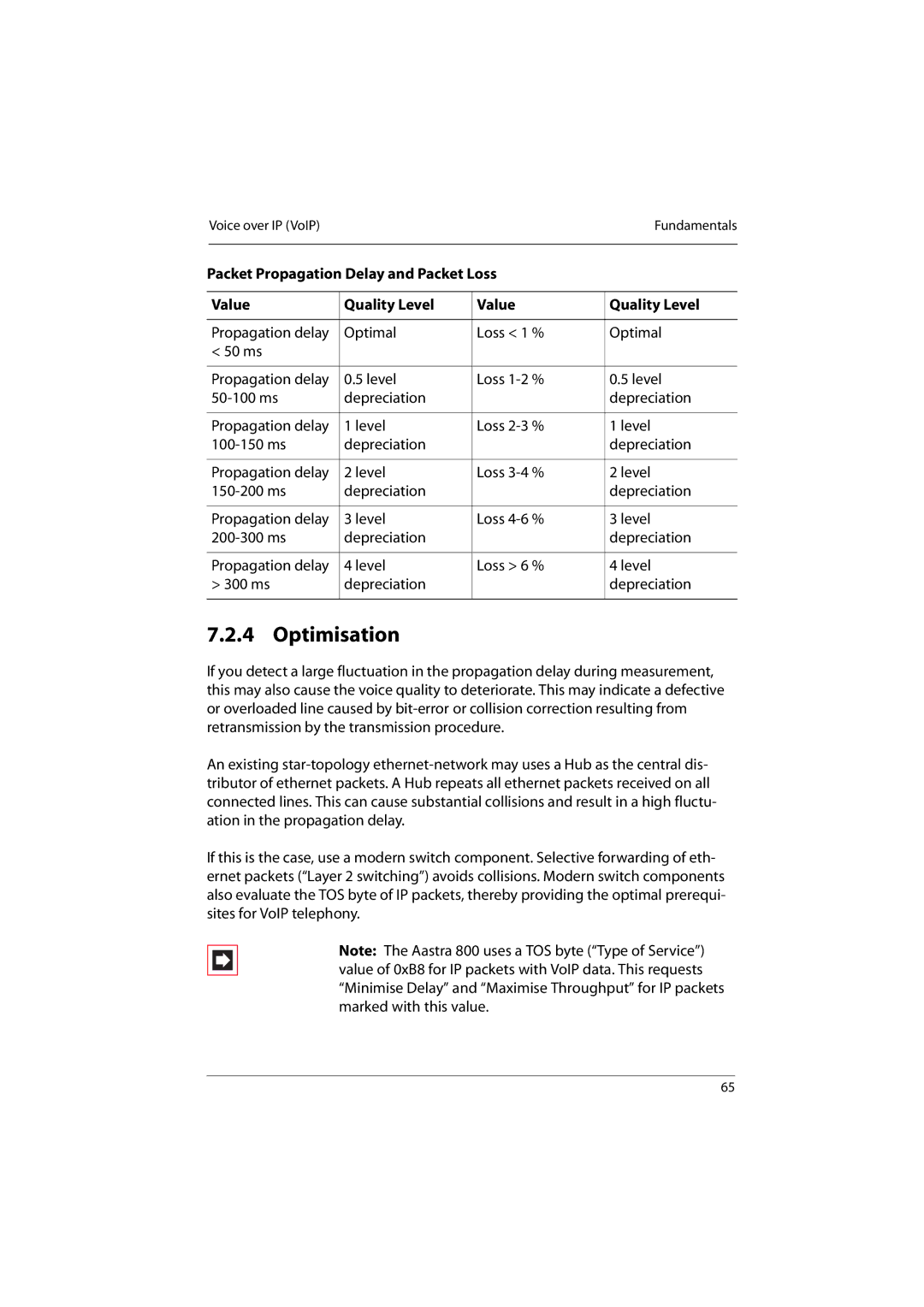
| Voice over IP (VoIP) |
|
| Fundamentals |
|
|
|
|
|
Packet Propagation Delay and Packet Loss |
| |||
|
|
|
|
|
| Value | Quality Level | Value | Quality Level |
|
|
|
|
|
| Propagation delay | Optimal | Loss < 1 % | Optimal |
| < 50 ms |
|
|
|
|
|
|
|
|
| Propagation delay | 0.5 level | Loss | 0.5 level |
| depreciation |
| depreciation | |
|
|
|
|
|
| Propagation delay | 1 level | Loss | 1 level |
| depreciation |
| depreciation | |
|
|
|
|
|
| Propagation delay | 2 level | Loss | 2 level |
| depreciation |
| depreciation | |
|
|
|
|
|
| Propagation delay | 3 level | Loss | 3 level |
| depreciation |
| depreciation | |
|
|
|
|
|
| Propagation delay | 4 level | Loss > 6 % | 4 level |
| > 300 ms | depreciation |
| depreciation |
|
|
|
|
|
7.2.4 Optimisation
If you detect a large fluctuation in the propagation delay during measurement, this may also cause the voice quality to deteriorate. This may indicate a defective or overloaded line caused by
An existing
If this is the case, use a modern switch component. Selective forwarding of eth- ernet packets (“Layer 2 switching”) avoids collisions. Modern switch components also evaluate the TOS byte of IP packets, thereby providing the optimal prerequi- sites for VoIP telephony.
Note: The Aastra 800 uses a TOS byte (“Type of Service”) value of 0xB8 for IP packets with VoIP data. This requests “Minimise Delay” and “Maximise Throughput” for IP packets marked with this value.
65
